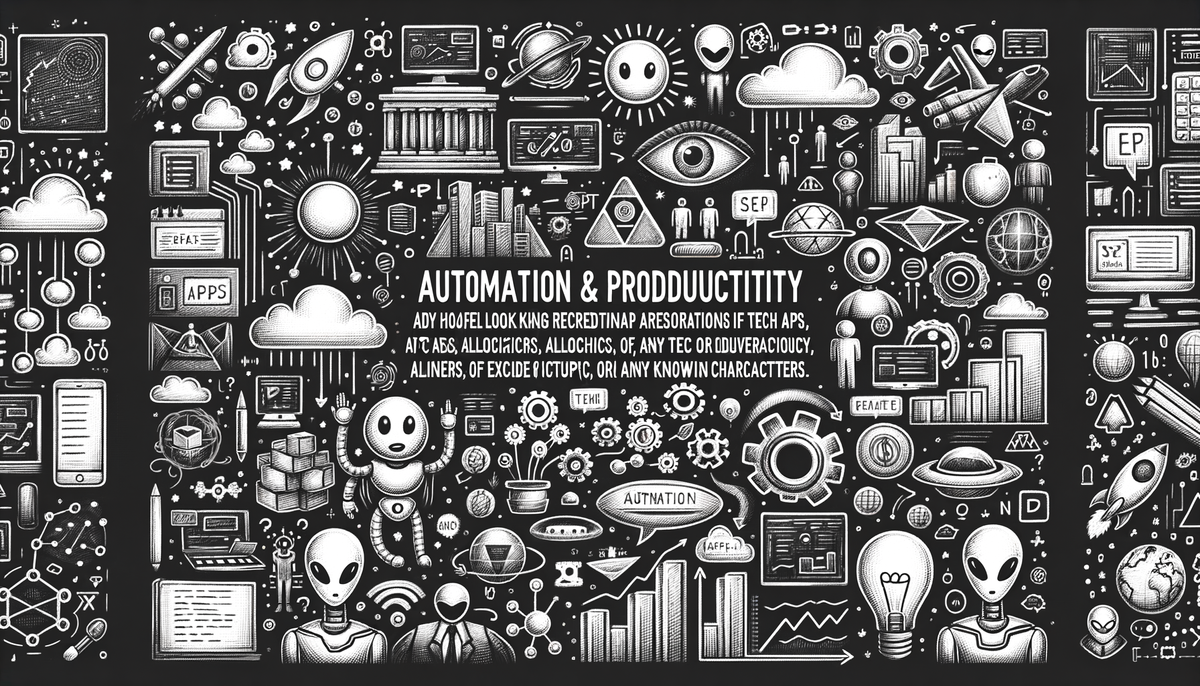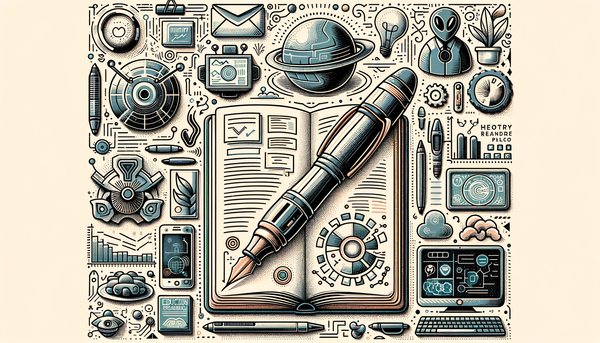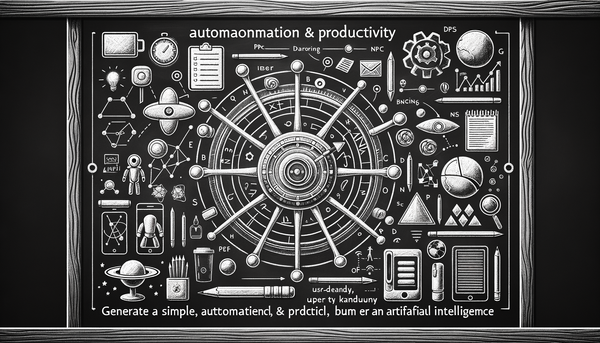AI News Podcast Update: Navigating the Tech Landscape

In a surprising twist, government agencies, tech startups, and even a Texas mom are reshaping our expectations of AI—from clunky training videos with outdated animations to sophisticated algorithms that distill a flood of app reviews into digestible insights.
Government’s AI Integration: A Tale of Promises and Pitfalls
The Social Security Administration’s recent endeavor to integrate AI into its workflow offers a vivid case study in the challenges of transitioning from ambition to execution. With the introduction of the Agency Support Companion, an AI chatbot designed to bolster employee productivity, the SSA aimed to streamline everyday tasks amidst sweeping operational changes. However, early attempts were mired by a training video that resembled early 2000s web aesthetics—its rudimentary animation, glaring oversight in emphasizing data privacy, and lack of engaging instructions left many employees puzzled and skeptical.
Employees, already overwhelmed by significant staffing cuts, expressed doubts when responses from the chatbot felt vague and disconnected from real needs. While the SSA quickly issued a corrective fact sheet urging caution against sharing personally identifiable information, the underlying lesson resonates across sectors: adopting AI requires more than technology—it demands clear, thoughtful communication and robust practical training. This episode mirrors the sentiment found in our previous discussion on AI operational challenges and modern tech transformations at AI.Biz.
“We will be able to use machines to augment human intelligence, but never to replace it. The creativity of the human mind will always be the final frontier.” – Larry Page
This reminder is particularly important when considering AI in government operations. Effective adoption means addressing not only the technical integration but also the human factors and the implications of new work processes, ensuring every stakeholder is both informed and empowered.
Corporate Innovation: From Product Leadership to AI-Enhanced Decision Making
At the enterprise level, top chief product officers are increasingly recognizing AI’s role as an essential tool for strategic decision making. By leveraging the power of AI, CPOs can now tap into vast amounts of data to shape product roadmaps, optimize user experiences, and drive innovation. This approach is not just about automating tasks; it’s about creating smarter, more agile businesses ready to meet changing market demands.
Recent accounts from industry leaders illustrate that the integration of AI within product strategy—where outcomes and efficiencies are measured in real time—can significantly enhance product trajectories. Moreover, blending human creativity with machine precision enables companies to pioneer unique solutions while retaining consumer trust. For those interested in further exploring the intersection of leadership and AI, insights on these evolving strategies can be found on our latest breakthrough update.
Such case studies demonstrate how AI can act as a catalyst for product excellence, driving innovation even when other sectors are still grappling with basics, as seen with the SSA’s initiative. This juxtaposition underscores the need for tailored approaches to AI—an approach that respects the nuances of each industry.
Refining User Experiences: Apple’s AI-Powered Review Summaries
In a bid to simplify decision making for millions of users, Apple has embraced AI to summarize App Store reviews efficiently. This novel application, rolling out with iOS 18.4, involves a multi-step process that begins with filtering out spam and inappropriate content. The system then uses advanced language models to condense a vast range of user feedback into succinct summaries that highlight key features and recurring issues.
Such an innovation exemplifies the balance between machine efficiency and human-centric insight. Apple’s focus on producing clear, concise content aims to transform the overload of user data into a trusted guide for potential app users. By framing the reviews in standardized language and organizing them around specific themes, Apple is setting a new benchmark in digital consumer experiences.
However, the persistent challenge remains—ensuring that the AI always captures the nuanced sentiment behind reviews. History has shown that AI must evolve to meet a success rate high enough to maintain user trust. As tech analysts note, any shortfall might push consumers back towards the time-consuming traditional method of sifting through individual feedback.
Empowering Businesses: AI Innovations in Document Processing
The emerging tech startup Reducto is carving out a significant niche in automating one of the most labor-intensive tasks for businesses: document parsing. With a lucrative Series A funding round of $24.5 million led by Benchmark, Reducto underscores a broader market trend toward digitization. Their cutting-edge technology leverages advanced machine learning algorithms capable of extracting critical data from documents—a process that traditionally demands both time and human accuracy.
This innovation is particularly impactful in industries such as finance, healthcare, and legal services, where the precision of document management is paramount. The ability to reduce processing times while minimizing errors provides businesses with a competitive edge. As documented in research, automated document analysis can improve processing speeds significantly, a benefit that cannot be overstated in today's fast-paced digital landscape.
The success story of Reducto not only highlights investor confidence in AI-driven efficiency but also invites companies to rethink their approaches to internal workflows. Integrating such systems can be a game-changer in streamlining operations and reducing overhead costs—a vision echoed in previous posts like our discussion on AI-driven business transformation.
Data Centers and Sustainability: Greening the Digital Backbone
While AI continues to revolutionize many facets of business, the push toward sustainability in the data center industry has never been more critical. Recent surveys reveal an encouraging trend—managers in the UK and Ireland are increasingly prioritizing eco-friendly practices. However, high upfront costs and logistical constraints, such as limited access to biofuels, remain substantial barriers.
Data centers, the unseen backbone of the digital economy, are now under pressure to align with greener, more cost-effective energy solutions. UK operators are gravitating toward innovations like battery energy storage systems, while Irish counterparts are experimenting with future fuels such as hydrogen and biomethanol. This variability in regional approaches offers a fascinating glimpse into the future of sustainable digital infrastructures.
Collaboration between data center operators and energy providers is emerging as a key strategy to overcome these obstacles. As Billy Durie from Aggreko emphasizes, reliable energy suppliers and robust governmental policies can spearhead a much-needed transformation. While the path to a more sustainable digital future is strewn with challenges, this shift is a crucial step towards reducing the environmental footprint of our increasingly interconnected world.
The Brain versus the Bot: Unraveling the Mysteries of Human Cognition
As AI continues to mimic human capabilities, scientific research is shedding light on why our brains, refined over millions of years of evolution, remain far superior in certain respects. Unlike artificial systems that rely heavily on massive datasets and repetitive algorithms, human cognition thrives on efficiency and nuanced learning. Studies reveal that individual neurons possess highly specialized roles, challenging the oversimplified view that equates the brain to a mere computer.
For instance, particular neurons known as concept cells can trigger the recall of entire memories with minimal stimulation. This exceptional ability underscores a paradigm of learning based on rare, yet deeply impactful, neural firings—a far cry from AI’s reliance on volume data and repeated patterns. The emerging idea of Behavioral Time Scale Synaptic Plasticity further highlights that humans may learn from single, significant events rather than repeated exposures.
This profound difference is a humbling reminder of the intricate interplay between biology and technology. It calls into question the extent to which AI will ever truly replicate the depth of human understanding. For enthusiasts eager to explore this divergence further, in-depth analyses in neuroscience journals provide rich insight into these fascinating mechanisms.
Freelance Frontiers: Navigating the Demands of AI Training
In another compelling slice of the evolving AI narrative, the story of a Texas mom juggling her full-time real estate job with AI training projects shines a light on the human side of technological progress. Amanda Overcash’s journey—earning nearly $8,000 in three weeks while working from her kitchen table—is a testament to the hidden backbone of AI development. Engaging in tasks ranging from evaluating chatbot responses to transcribing audio, she has become an unexpected pioneer in this digital workforce revolution.
Earning around $40 an hour might appear enticing at first glance, but Overcash’s experience illustrates that AI training work is far from “easy money.” The constant pressure of stringent audits, complex guidelines, and the ever-present risk of burnout demands an extraordinary level of dedication. This dynamic environment reminds us that while technology might pave the way for flexible income opportunities, the workload and performance pressures can be equally demanding.
Her story resonates on a personal level, particularly with freelancers who might be considering a similar path. It’s a reminder that behind the impressive outputs of AI lie countless hours of meticulous human effort—a blend of passion, sacrifice, and relentless striving for excellence.
Cheating or Clever Problem Solving? The Controversial World of Cluely
In the spirited world of tech innovation, few stories capture the imagination like that of Cluely—an AI app designed to tilt the scales in favor of its users, be it during a virtual meeting or a coding interview. Developed by Columbia University undergraduate Chungin “Roy” Lee, Cluely has quickly become a lightning rod for debate. With its promise to furnish users with smart, contextually relevant suggestions, the app blurs the lines between helpful tool and outright cheating device.
The app’s viral debut featured playful demonstrations of how it could, rather audaciously, aid deception. At a subscription fee of $20 a month and bolstered by $5.3 million in funding, Cluely is not only challenging traditional testing norms but also questioning the ethical boundaries of AI. Its backers compare it to calculators and spellcheckers—tools designed to aid rather than replace human input. However, the inherent challenge remains: can technology ever truly balance on that fine line between clever support and compromising integrity?
Cluely’s journey invites us to examine our own perceptions of technology’s role in professional and academic contexts. As discussions swirl around the ethical implications of such tools, it is clear that AI continues to redefine what is acceptable, pushing students, professionals, and even traditional institutions to reconsider longstanding norms.
Merging Realms: From Gaming Frenzy to Everyday Tech
Outside the realms of pure AI and governance, the tech landscape remains a vibrant mosaic where consumer expectations and technological innovation often collide. The pre-order frenzy of Nintendo’s Switch 2 serves as a fascinating counterpoint to the high-brow discussions of AI ethics and corporate efficiency. With millions of eager gamers lining up—only to face logistical and tariff-induced setbacks—the scene paints a picture of massive consumer demand clashing with supply challenges. This phenomenon, reminiscent of classic tech product launches, underscores the persistent enthusiasm for innovation even when technical hiccups occur.
Additionally, the tech ecosystem has recently seen a wave of creative gadgets: vertical mice offering ergonomic comfort during long work hours, and open-ear wireless earbuds that strike the perfect balance between style and function. Each of these developments speaks to a dynamic market where every advancement, whether in the gaming world or in practical computing accessories, nudges us closer to an ever more interconnected digital reality.
Meanwhile, our evolving digital culture finds its home in diverse online communities. Discussions around controversial platforms, reminiscent of the legendary chaos once embodied by sites like 4chan, reveal the enduring influence of early internet subcultures. Such reflections have spurred podcast discussions that echo the narrative of our shifting digital ecosystem—a theme that has featured in our recent updates at AI.Biz.
Looking Ahead: AI’s Ever-Evolving Impact on Society
As we take a panoramic view of these varied AI stories—from cautious governmental initiatives and cutting-edge corporate strategies to ethical challenges and the reinvention of everyday tasks—a common thread emerges: AI is not a monolith but a dynamic force shaping our society at multiple levels. Each innovation, whether it’s streamlining document processing, assisting in decision making through review summaries, or even shaking up ethical boundaries with a “cheating” app, offers not just technological advancement but also a mirror to our own evolving ambitions.
In a world where the interface between human intellect and machine capability grows ever more blurred, it is vital that we embrace both the promises and limitations of AI. The nuances between a neatly summarized review and the intricate complexities of human cognition remind us that technology, at its best, should amplify the human spirit rather than replace it. For those navigating these transformative times, perhaps the wisest approach is to stay curious, informed, and—most importantly—prepared to adapt.
As one might reflect, the digital future is not just about faster processing speeds or more efficient workflows, but also about understanding the deeper, often unpredictable, ripple effects that technology has on every facet of our lives.
Further Readings and Cross-References
Explore additional perspectives on today's shifting tech frontier at our AI.Biz site:
- AI Updates, Transformations, and Challenges
- AI Innovations and Current Challenges
- Looking Ahead: AI Innovations in 2028
- Exploring AI Breakthroughs and Their Impact
Final Thoughts
Reflecting on the varied narratives—from the cautionary notes of governmental missteps to pioneering efforts in both corporate and freelance spaces—it becomes evident that AI’s journey is a mosaic of brilliant promise interlaced with complex challenges. Whether you are a seasoned professional or a curious newcomer, the evolution of AI reminds us that while technology may be the engine of progress, it is the thoughtful integration and human oversight that truly steer the future.



